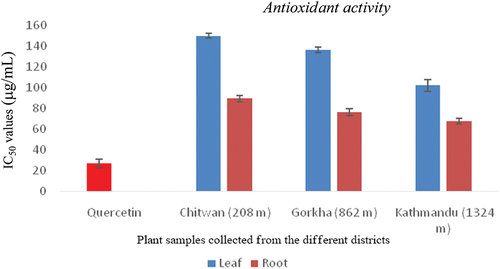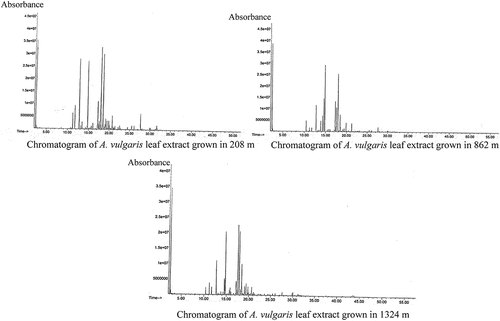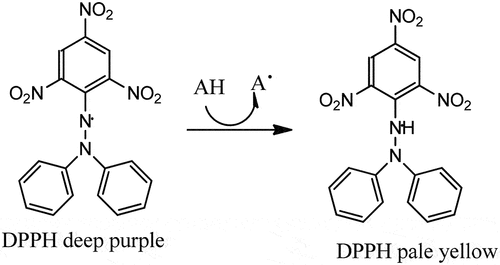Figures & data
Figure 4. Photographs of the plant material, cold percolation, and Clevenger’s apparatus used in the extraction of essential oils.

Table 1. Yield percentage of extracts and essential oils for root and leaf of A. vulgaris growing in different altitudes.
Table 2. Total phenolic and flavonoid contents in the leaf and root extracts of A. vulgaris growing in different altitudes.
Figure 6. The IC50 values for the DPPH free radical scavenging shown by the leaf and root extracts of A. vulgaris grown in different altitudes as compared to the positive control.

Table 3. Zone of inhibition (ZOI) shown by the plant extracts and essential oils growing at different altitudes against six strains of bacteria in agar diffusion test.
Table 4. α-Amylase inhibition shown by A. vugaris root and leaf extracts.
Figure 7. Chromatograms of components of essential oils of A. vulgaris growing in different altitudes such as Chitwan (208 m), Gorkha (862 m), and Kathmandu (1324 m).

Table 5. Chemical composition of essential oils of A. vulgaris leaf growing in Chitwan (208 m) and Gorkha (862 m).
Table 6. Chemical composition of essential oils of A. vulgaris leaf growing in Kathmandu (1324 m).




